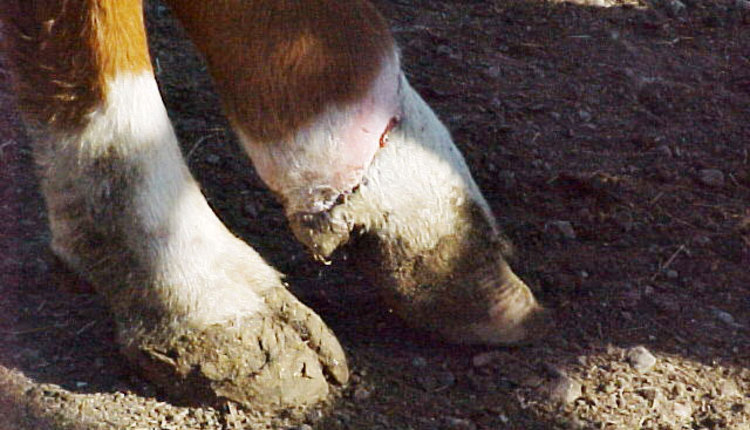Fescue foot flares in cold weather |
| By Amber Friedrichsen, Associate Editor |
|
|
 Photo: University of Missouri Cases of cattle dying from fescue foot have recently spiked in Missouri. This condition occurs when toxic alkaloids in Kentucky 31 tall fescue cause animals’ blood vessel to shrink, reducing blood flow to their extremities. Craig Roberts, a forage specialist with the University of Missouri Extension, says fescue foot is most common in January when cattle graze toxic fescue following a cold spell. Early detection of the condition is key to limiting the negative effects it can have on beef production. If cattle walk slowly or have a limp, Gene Schmitz, a livestock specialist with the University of Missouri Extension, recommends putting animals in a chute and inspecting their lower legs. Look for swelling where animals' legs join their hooves. Cool skin also indicates a lack of blood flow. Remove cattle displaying these warning signs from fescue immediately and feed them alternative forages or other feedstuffs. “If you wait to move cattle off infected pastures, it may be too late,” Roberts warns. “If left on toxic pastures, limping cows can lose hooves and become infected with gangrene.” In addition to wreaking havoc on hooves, vasoconstriction caused by toxic fescue can result in the tips of animals’ ears and tail switches falling off. These cattle will likely survive their injuries, but their market value will decline. On the other hand, extreme cases of fescue foot can prevent animals from walking or grazing, ultimately leading to death. There is no cure for fescue foot, but forage producers can renovate pastures to novel endophyte varieties of tall fescue that do not produce toxic alkaloids. Not only would this eliminate the risk of fescue foot, but it would also improve rates of gain, weaning weights, milk production, and reproduction.  Amber Friedrichsen Amber Friedrichsen served as the 2021 and 2022 Hay & Forage Grower summer editorial intern. She currently attends Iowa State University where she is majoring in agricultural communications and agronomy. |
